Consultation on Personalised care and support planning tool - summary of consultation responses
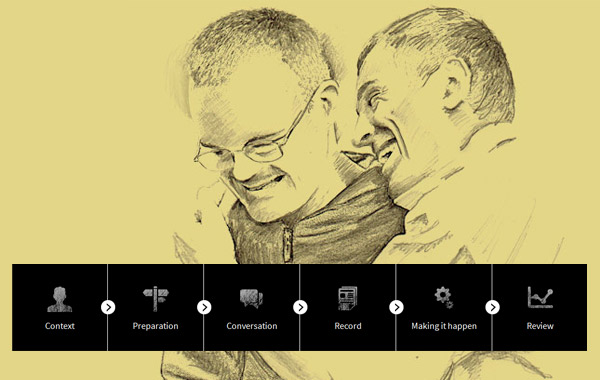
On 30 September, Think Local Act Personal (TLAP) - commissioned by the Department of Health, the Local Government Association and the Association of Directors of Adult Social Services and in association with Coalition for Collaborative Care - launched a major new online tool to support integrated and person-centred care for people with health and social care needs, as well as to aid broader implementation of the Care Act.
The personalised care and support planning tool is aimed at commissioners, planners, clinicians and practitioners across the health and social care system grappling with the complex changes needed to deliver person-centred, coordinated care. Through a series of case study scenarios developed with clinicians, social care professionals, voluntary sector partners and people with lived experience, it demonstrates how different journeys through personalised care and support planning (PCSP) could look for people with multiple long term conditions, mental health problems, learning disabilities and dementia when a radical new approach is embraced.
The tool was published as a beta version to allow for people to formally share their views and feedback on the tool. This brief note:
- Summarises the response to the consultation
- Highlights the next steps we will take to update, promote and further the tool.
Who responded to the consultation?
In total we received 85 responses to the formal consultation. In addition, we received 6 other sets of feedback from individuals in organisations, meaning a total of 91 formal responses in total.
Responses were from individuals in a range of roles, including:
- People with lived experience
- Carers or family members
- Independent advocates
- Brokers
- Support workers
- Social workers and Principal Social Workers
- Social work team managers
- Public health nurses
- Day Services Officers
- Community Matrons
- Registered Managers
- Commissioners
- Chief Executives
Similarly, individuals were based in a range of organisation types, including:
- Small and large voluntary sector organisations - including as representative organisations and as provider organisations
- User-led organisations
- Local authorities
- Private provider organisations
- Social enterprise provider organisations
- Individual responses.
Consultation responses - quantitative findings
Three of the main questions enabled some quantitative findings, which are presented below. Additional comments made under these questions are combined with other answers received in the qualitative findings below.
Note: in the analysis that follows, it wasn't possible to differentiate answers on the basis of the person's perspective/role or the organisation they worked for.
Does this resource reflect your understanding of the stages and tasks involved in personalised care and support planning for people with health and social care needs?

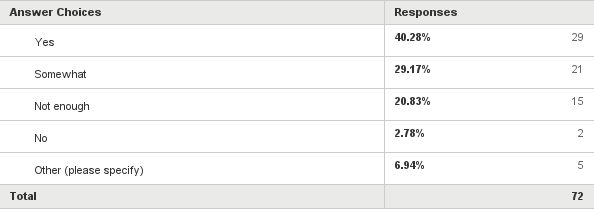
Was the material in this tool helpful to you?
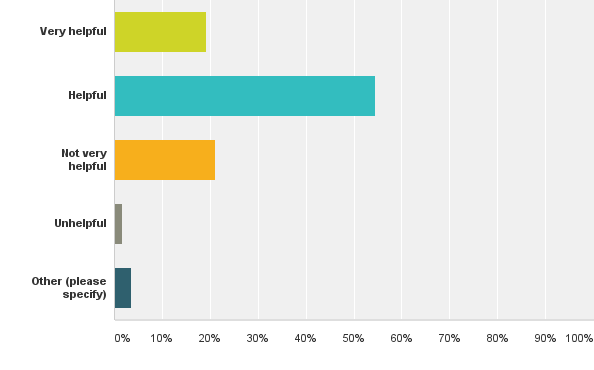
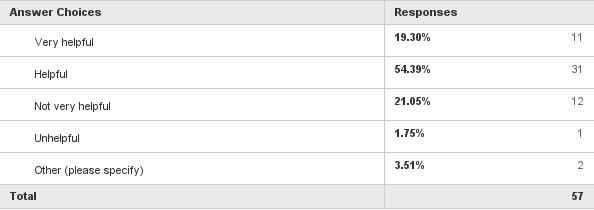
Was it clear how to use each section of the tool, and did they fit together well?
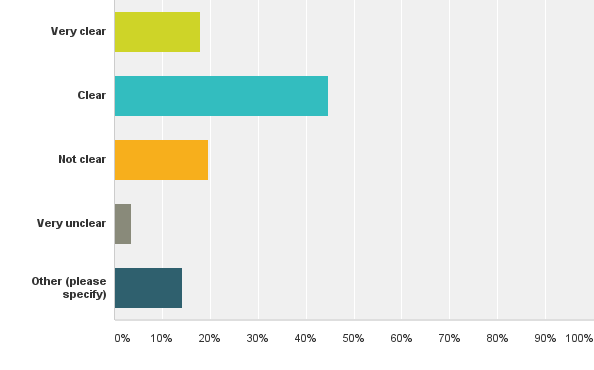
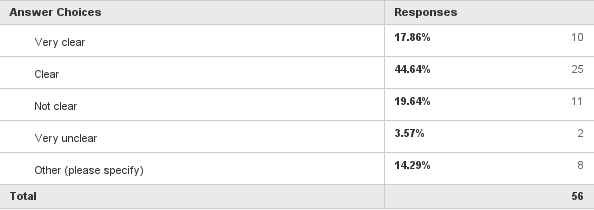
Consultation responses - qualitative results
In addition to the question above we asked the following questions relating to the process the tool describes:
- What do you think should be the roles of different stakeholders from health, social care, the voluntary and community sector and the wider system in supporting personalised care and support planning?
- What might be the key barriers to taking the personalised care and support planning approach forward and how could they be addressed?
There were a range of useful views in response to these questions. By far the biggest theme was that, though people felt the tool was useful, it was a long way away from what the current reality is for a lot of people. Barriers that people highlighted included:
- Lack of information and awareness on the care and support planning process and what it can achieve
- Poor communication with people and between professionals
- Lack of understanding of good multi-disciplinary working
- Insufficient partnership working between different agencies
- Not involving people and their families/carers enough in the process
- Not enough training to support professionals to undertake good care and support planning
- Too much focus on people's deficits and needs and not enough emphasis on the outcomes they want to achieve or the life they want to live
Alongside these broad issues, specific feedback themes related to the tool itself included:
- It was felt there wasn't sufficient mention of advocates and the role of advocacy in the examples given
- Similarly, it was felt that more reference could be made to the role of carers and/or family members in the examples
- It was noted that it would be useful, where relevant, to include appropriate cross-referencing to the Care Act Code of Practice so people could identify clearly which part of the tool corresponds to which section of the tool
- Respondents wanted to ensure consistency of language, such as whether we should talk about "person-centred" rather than "personalised" care and support planning
- More reference to the work of integration with housing was asked for.
Finally, we asked people what suggestions they had on how we could improve the tool. Suggestions made are picked up in the next section.
What next?
There are two main types of actions for us to complete regarding what comes next for the tool. The first set are straightforward, short-term updates and actions which will respond to many of the practical suggestions made about the tool. These are:
- Changes to the tool: responding to above. Also make it clearer through more signposting so that it is easier to navigate from wherever you are in the tool
- Produce a range of different outputs so that people can engage with the tool in different ways
- Update and promote the tool to all relevant stakeholders
The second set of actions are more strategic by nature, and regard the development and extension of the tool in the medium- and long-term and reflect some of the wider barriers highlighted by consultation respondents. These are as follows:
- Explore whether to amend existing characters or add further characters in order to (i) reflect more examples of adaptations that can be made (e.g. telecare), or (ii) who represent other impairments or conditions
- Extend the section on workforce
- Identify what resources currently exist to help translate this tool into practice, particularly for the workforce
- Explore in collaboration with relevant partners ways in which the tool can be further updated to support the developing priorities across the health and social care system.
The practical changes to the tool will be made during the rest of 2015, with the remainder of the short-term actions taking place from the start of 2016 onwards with a view to completing them by the start of 2016/17. The medium- and long-term actions will start in January 2016 and continue throughout 2016/17 and beyond.
If you would like to stay in touch on further developments to the tool, please sign up to TLAP's monthly newsletter.
If you would like to support us disseminate the too, please feel free to share it amongst your networks. On social media we have been using the hashtags #personalisedcareplan and #careact2014
(If you require alternative accessible formats, please contact TLAP)
